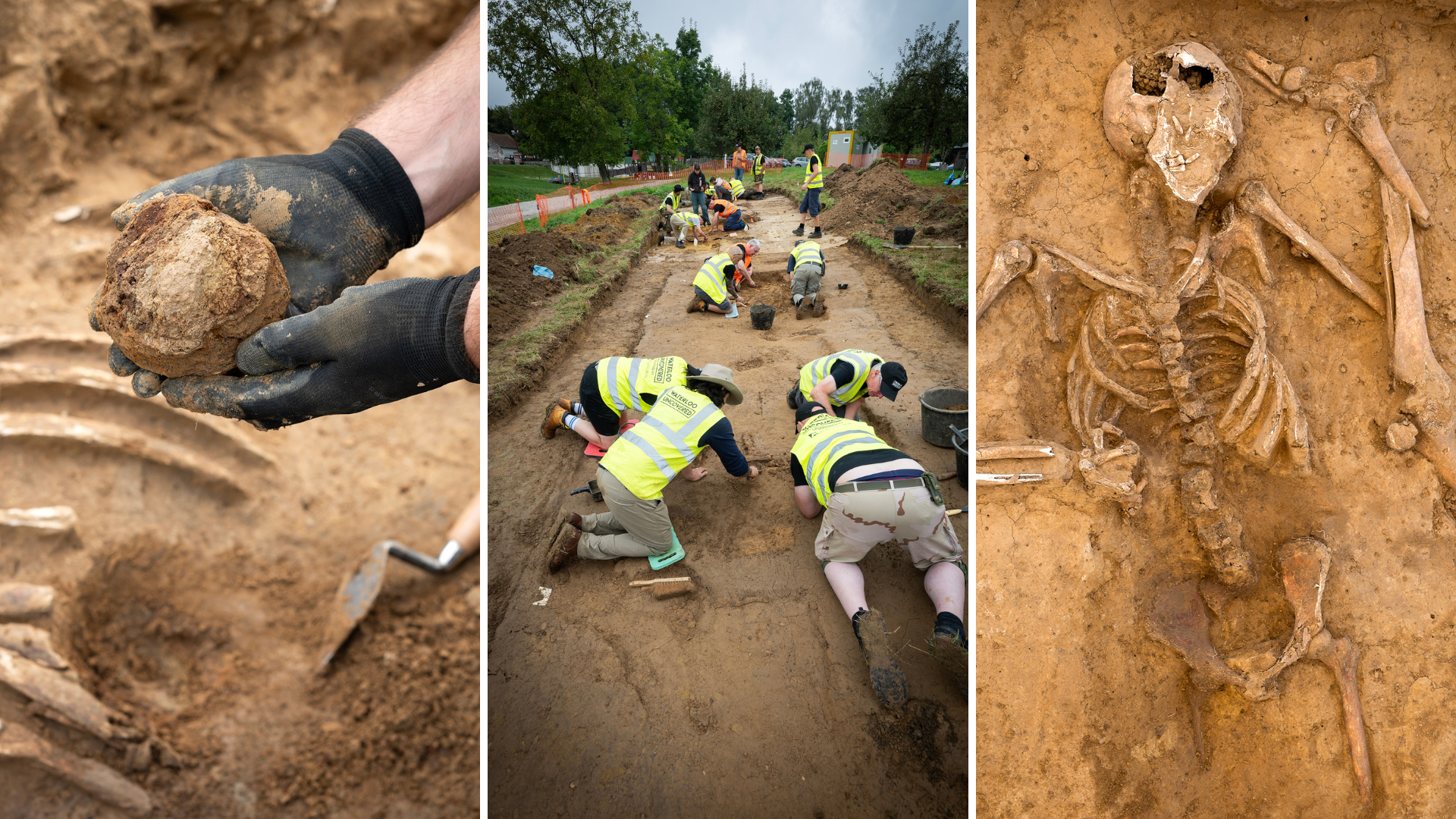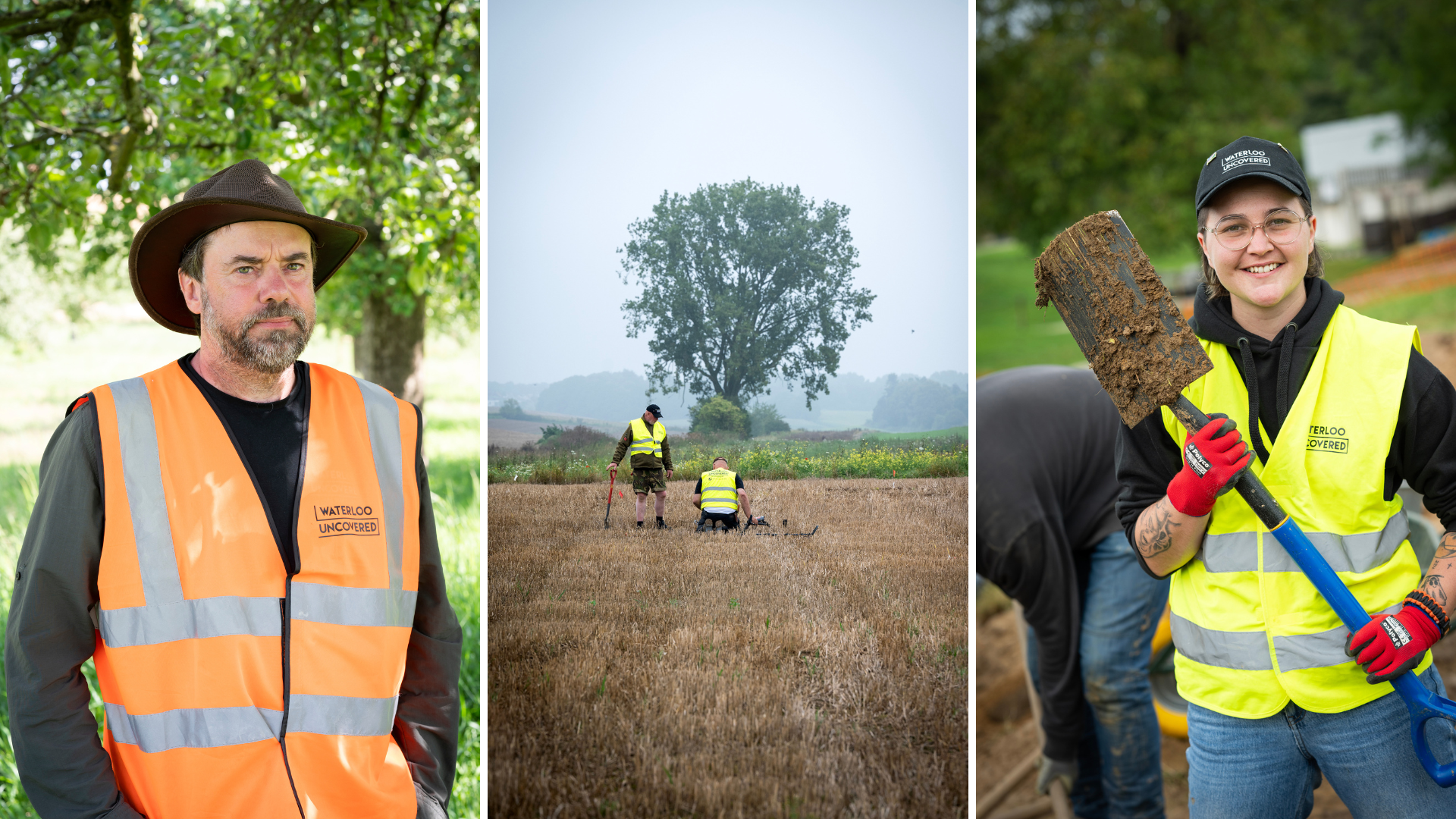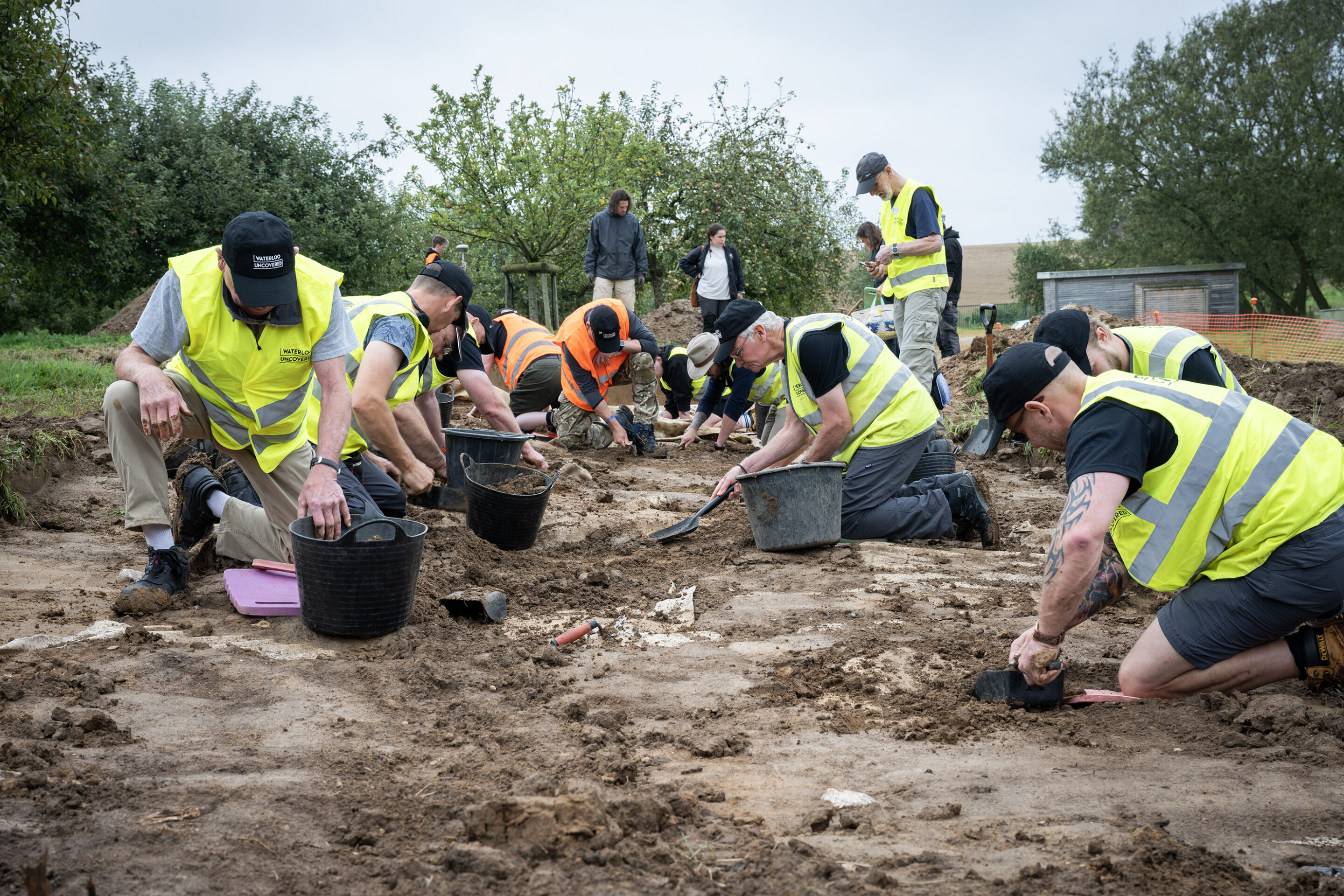UK-based charity Waterloo Uncovered returned to the Waterloo battlefield this month for two weeks of groundbreaking excavations, shedding new light on the 1815 battle that sealed Napoleon's defeat in a single, bloody day. Every year, the charity brings together archaeologists, veterans, and serving military personnel in a unique project combining personal recovery and historical exploration.
"I always get excited when I hear that beep," Marli Norman, a 26-year-old aircraft engineer in the Royal Navy with no previous experience in archaeology, said enthusiastically after a morning of metal detecting on the muddy battlefield. Alongside fellow veterans and archaeologists, Norman spent days combing through the soil of the orchard on Mont-Saint-Jean farm, the site of the British and Allied field hospital during the battle.
Despite leaving over 20,000 men and 10,000 horses dead, human remains are remarkably scarce on the site of the Battle of Waterloo. Only two complete human skeletons have been recovered from the battlefield—one found during Waterloo Uncovered’s 2022 excavation which also unearthed three horses euthanised with musket balls to the head.
This year's team uncovered more of the 500 amputated limbs said to have been removed in the aftermath of the battle. They also found more animal remains including an ox with signs of butchery that was likely from Wellington’s army's herd of cattle, and at least seven more horses.
A discovery that left the team particularly intrigued, was the skeleton of a horse with the cannonball that most likely killed it, still lodged inside its ribs. For 69-year-old Jim Hollman, a veteran of the Household Cavalry, the find struck an emotional chord.

Cannonball pictured after being removed from the horse's ribs during this year's dig, and the complete human skeleton found by Waterloo Uncovered in 2022. Credit: Chris van Houts
It brought back painful memories of the IRA Hyde Park Bombing in 1982, when Hollman was stationed in Knightsbridge, London. The attack killed seven cavalry horses, a tragedy he witnessed firsthand. "I saw the injured horses that day, so I know the suffering they [the horses injured at Waterloo] went through," he told The Brussels Times.
What makes the site "truly unique," explained Archaeological Director Professor Tony Pollard from the University of Glasgow, is the combination of human and animal remains buried together. The team discovered a makeshift barrier separating the two — a row of ammunition boxes stripped from soldiers’ leather satchels, placed in a poignant attempt to offer respect to the dead amid the chaos of battlefield cleanup.
Combining veteran recovery with archaeology
But the digs at Waterloo are not just about the artefacts. Founded in 2015 by two serving military personnel that studied archaeology at university, Waterloo Uncovered is a charity that aims to combine world-class archaeology with veteran care, recovery, and education.
By bringing veterans to battlefield digs where they can earn official university qualifications and gain hands-on archaeological experience, CEO Abigail Boyle explained that the charity aims to equip veterans with valuable transitional knowledge and skills to support their recovery and future after service.
In addition to this educational aspect, a key focus for Waterloo Uncovered is the well-being of its veterans. Throughout the excavation, participants receive support from two dedicated welfare officers. "We don’t claim to cure PTSD, but we do encourage veterans to focus on their individual well-being goals," explained welfare officer Rod Eldridge. Even after the two-week dig, the charity continues to provide follow-up support for veterans for up to a year.
After nine years of service in the Royal Navy, Norman is preparing to leave the military to pursue a degree in physiotherapy. Earlier this year, she came across an email from the Navy's personnel support group promoting the 2024 Waterloo Uncovered excavation. Although her current role is "very different from archaeology," she decided to apply.
"I’ve struggled with mental health and a recent injury, so I’m really here for well-being," shared Norman. While the archaeology is a fun part of the experience, her main goal is to step out of her comfort zone, make new friends, and prepare for civilian life.

Archaeological Director Professor Tony Pollard. Two veterans metal detecting in a nearby field. Marli Norman, who is currently serving in the Royal Navy. Credit: Chris van Houts
This year, Waterloo Uncovered brought together five UK beneficiaries—three veterans and two serving members—along with participants from the Netherlands, the USA, and, for the first time, Belgium. With their shared military background, the group thrives on the strong sense of community support. "I’ve already made plans to meet up with the other veterans I’ve met here," Norman said with a smile.
While the idea of bringing veterans to a battlefield as part of their recovery journey may seem counter-intuitive, the team at Waterloo Uncovered emphasised just how beneficial the experience can be. Tony Pollard recalled being concerned about how one veteran, who had lost both legs in service, might react to the discovery of amputated legs at the site. "But it actually had a positive impact on him," Pollard noted. "He considered himself lucky to have sustained such an injury today and not in 1815."
A win-win collaboration
The collaboration not only seem to benefit the veterans, but also the archaeologists. "I've been a battlefield archaeologist for over 20 years. In that period I spent a lot of time digging up dead people, until I realised that the living are more important," explained Pollard.
As an expert in reading battlefield landscapes and terrain, he recalled how valuable the insights of a veteran who had fought in a compound in Afghanistan were when analysing the similar fighting conditions at Hougoumont Farm in Waterloo. "My life has never depended on my knowledge of terrain the way it has for these people," he reflected.
"It's that magic that comes from making world-class archaeologists who understand what's in the ground, work alongside veterans who understand how battles are fought," noted Boyle.
While some veterans choose to pursue archaeology degrees after their time in Waterloo, for some it becomes a new lifetime hobby. Metal-detecting is a particularly popular task amongst the veterans, and Jim Hollman plans to buy his own device once he gets back home to Scotland.

